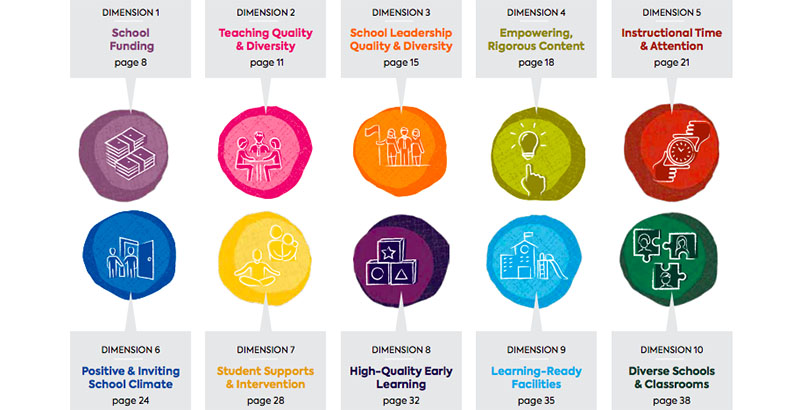Amerikaner & Travers: It’s Not Just How Much Money Schools Get, It’s How They Use It. 10 Ways to Start Talking About Education Resource Equity

In seemingly every conversation about improving educational outcomes for our nation’s most underserved youth — black, Latino, Native American, low-income — there is a vociferous chorus contending that without pouring more money into schools, not much can be done. Meanwhile, a competing chorus proclaims that the path to educational equity is to hold schools and districts accountable for student success, but without offering a clear, workable path or the resources needed to make it happen. Schools and districts just have to figure it out.
We say there’s another way forward.
At the newly formed Alliance for Resource Equity — a partnership between The Education Trust and Education Resource Strategies — we’re here to change the conversation.
Across the country right now, from House Bill 3 in Texas to the Kirwan Commission in Maryland to the recently passed Student Opportunity Act in Massachusetts, states are engaged in meaningful reform of their funding systems. Yes, all communities deserve accountability for student opportunity and success. And of course, schools that serve students with greater needs require more money. But it’s not just about how much money schools get. Texas, Maryland, Massachusetts and communities across the country must also look at how well those resources are used to benefit their students.
Every child has a right to a high-quality education, but historically, our nation’s schools have not addressed the unique needs of all our students — not only those mentioned above but also English learners, children with disabilities and students experiencing foster care, homelessness or the juvenile justice system. We believe a focus on need is necessary to find the right combination of supports that gives each student in every community a fair shot at success while creating high academic standards.
To advance this conversation, the alliance’s new report, The Education Combination, identifies 10 dimensions of education resource equity — along with key questions for district and local leaders to ask when evaluating how well their district or school is using resources to boost educational opportunity. One of the first steps toward a fairer distribution of education resources is understanding the current state of equity and excellence for students in a district; the alliance’s diagnostic tool can help advocates and leaders identify strengths and gaps and sets the foundation for educators, local decision-makers, advocates and families to build an action plan together in their states and districts.
The 10 dimensions of education resource equity:
- School funding
- Teacher quality and diversity
- School leadership quality and diversity
- Empowering and rigorous content
- Instructional time and attention
- Student supports and intervention
- Positive and inviting school climate
- High-quality early learning
- Learning-ready facilities
- Diverse classrooms and schools
Research shows that schools that accelerate learning for students organize their use of people, time and money very differently than most schools. Say a student is excelling in reading but struggling in math. She might get intensive math tutoring and be enrolled in honors English because her school and district have provided extra time for students with additional needs while automatically enrolling students in advanced coursework so that common barriers such as required teacher recommendations or a lack of translation of parental consent forms don’t keep her from getting the opportunities she needs. The 10 dimensions essentially open up the black box of school transformation for equity and help provide the tools advocates and policymakers need to ensure that all students can unlock their full academic potential.
These dimensions — such as positive school climate, engaging instruction and strong school leadership — are fundamentally grounded in the daily experience of students in school. The report highlights education resource equity by drawing on research and lived experiences of students, parents and educators across the country.
If we Americans want to truly live up to our ideals, together we must address the institutionalized, systemic manifestations of racism that persist in this country. The alliance does that by examining the amount and use of resources in schools, but none of us can do it alone. To make true progress, people at all levels — from state and district leaders to school board members, business leaders, civil rights activists and local advocates, to families, educators, community members and students — will need to work together to build common understandings and shared plans for what to do next.
Skeptics may assume that because inequities in education have persisted for so long, they must be inevitable and endemic. But this is not the case. Systems and communities can make real progress. Now that you know that education resource equity is achievable, are you ready to take action in yours?
Ary Amerikaner is vice president of p-12 policy, practice and research at The Education Trust. Jonathan Travers is a partner at Education Resource Strategies.
Get stories like these delivered straight to your inbox. Sign up for The 74 Newsletter

;)